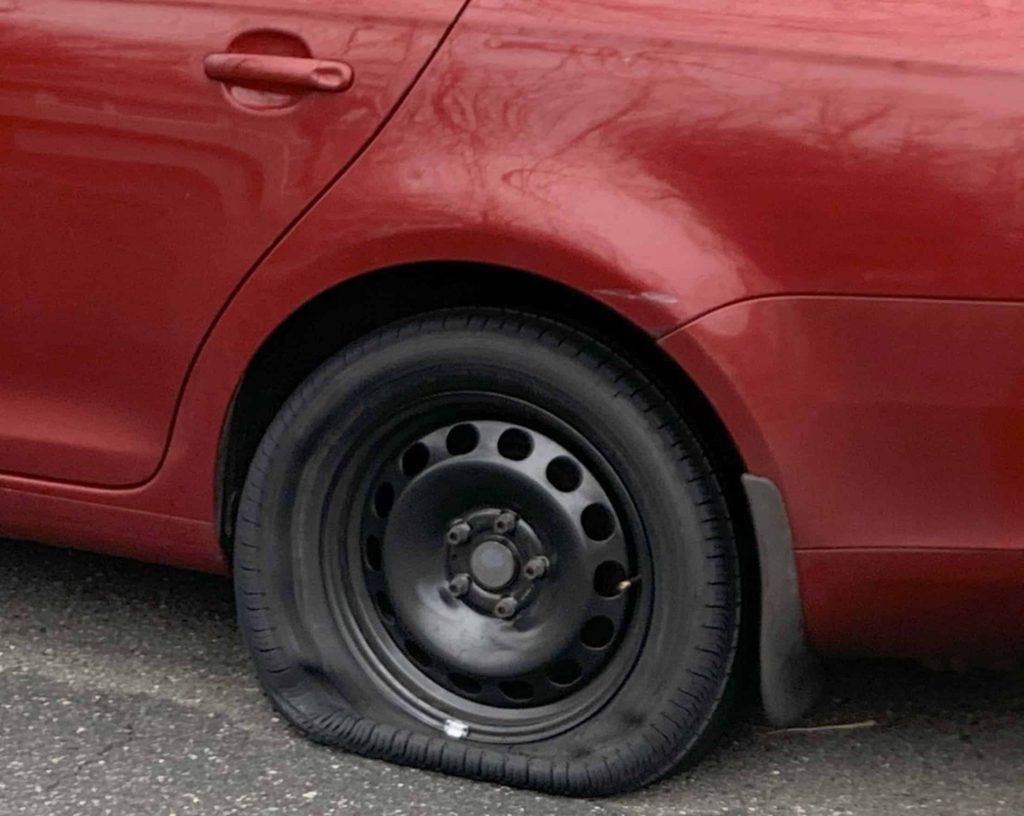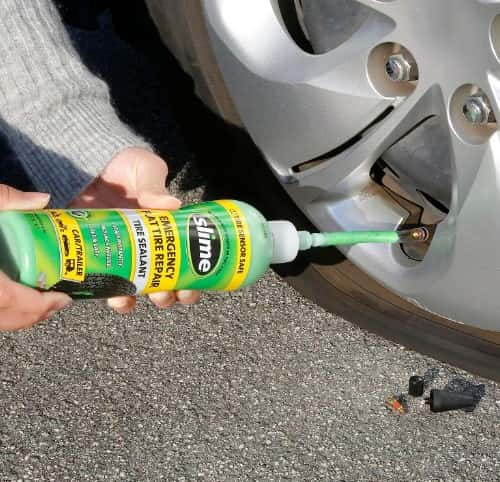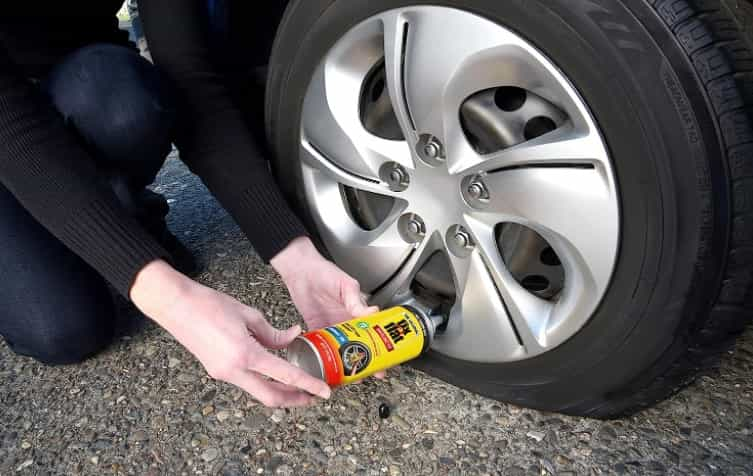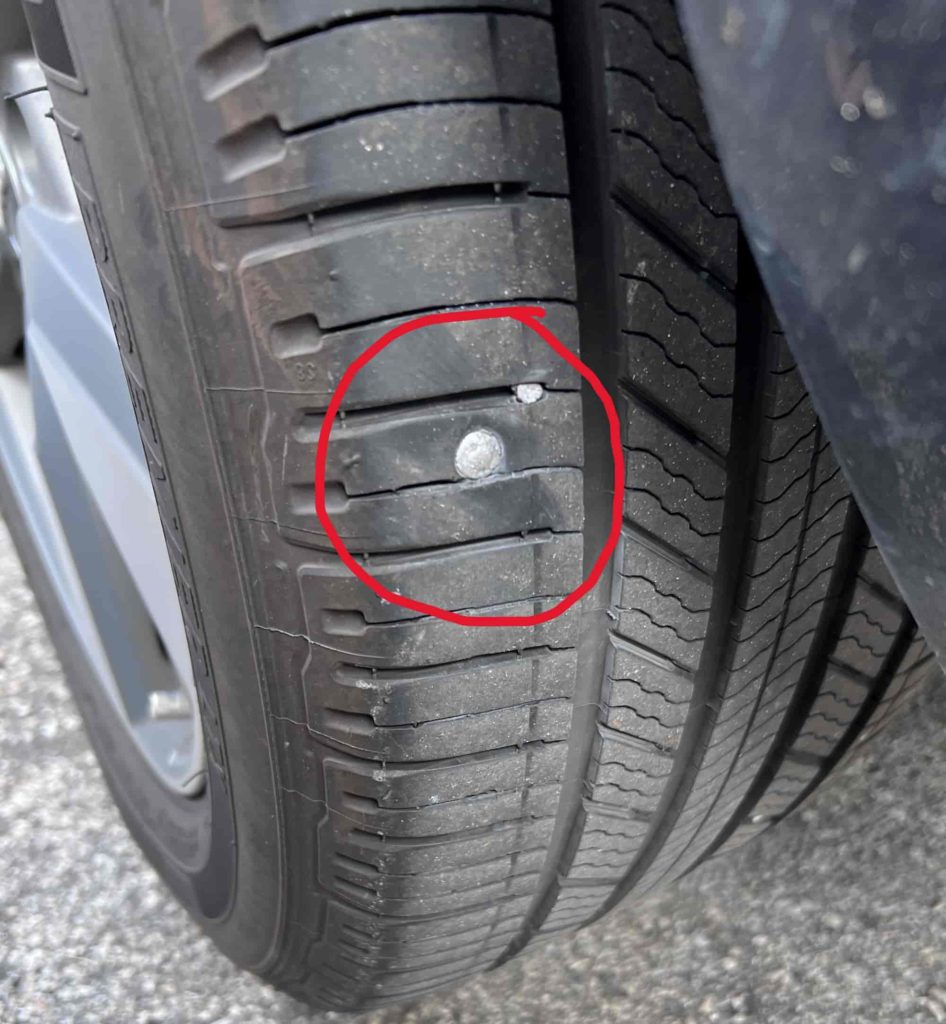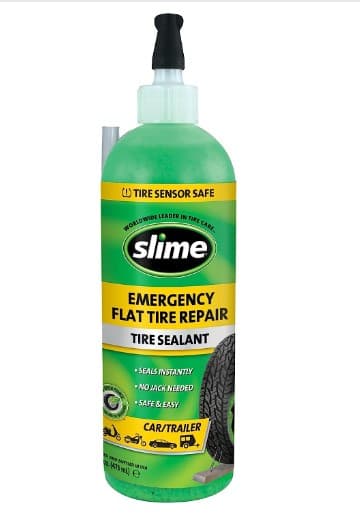Introduction
Picture this: you’re cruising down the open road, the wind brushing against your face, when suddenly, a sharp object punctures your tire. In such an unfortunate situation it is crucial to have a dependable solution that can swiftly remedy the problem and keep you on your journey. This is where tire sealants come into play – innovative concoctions designed to combat pesky punctures and maintain optimal tire performance.
So, what exactly is a tire sealant? Let us delve into the depths of this remarkable substance and explore its intriguing mechanics.
What is Tire Sealant?
In its simplest form, a tire sealant can be described as a liquid or gel-like substance injected into tires to prevent or repair leaks caused by punctures. These leaks are typically caused by sharp objects like nails or glass shards that penetrate the rubber surface of the tire. Rather than leaving motorists stranded on the roadside with a flat tire, sealants offer an effective solution by instantly sealing these breaches from within.
The Significance of Tire Maintenance
Tire maintenance is often overlooked but plays an undeniable role in road safety and vehicle longevity. Neglected tires are more susceptible to punctures and blowouts, posing risks not only to yourself but also to fellow drivers on the road. Regular inspections for punctures and maintaining appropriate inflation pressure are vital practices that cannot be overstated.
However, even with diligent care there is always an inherent risk of encountering unexpected obstacles on our journeys. This is where tire sealants emerge as invaluable allies in safeguarding against unforeseen hazards.
By providing quick repairs without needing immediate assistance or spare tires, sealants offer peace of mind during long drives or remote excursions where immediate professional help may not be readily available. Tire sealants are undoubtedly revolutionizing how we approach maintenance and safety on the road.
In the following sections we will explore in greater detail the composition of these sealants, their working mechanisms, and the range of benefits they offer. Prepare to be enlightened by this exploration into the fascinating world of tire sealants.
Understanding Tire Sealant
Composition of Tire Sealant
Tire sealants are carefully formulated solutions designed to prevent or repair punctures in tires. These remarkable substances typically consist of two primary components: base materials and additives. The base materials used in tire sealants often include latex and synthetic polymers which serve as the foundation for their unique properties.
Latex is a milky fluid derived from rubber trees, and is commonly employed due to its excellent adhesive qualities and flexibility when dry. Synthetic polymers on the other hand offer enhanced durability and resistance to degradation over time.
Latex
Latex-based tire sealants possess exceptional bonding capabilities due to their ability to adhere effectively to the inner surface of the tire when exposed to air. This characteristic allows them to create a self-sealing barrier upon contact with any potential puncture point.
Latex-based sealants exhibit remarkable elasticity that allows them to flex with the natural movement of the tire, preserving their integrity even under high-stress conditions. This property enables them to maintain an airtight seal for extended periods.
Synthetic Polymers
Synthetic polymer-based tire sealants offer several advantages over latex alternatives. These polymers are engineered through scientific processes that create specific molecular structures tailored for optimal sealing performance.
They often incorporate cross-linking agents that establish interconnected networks within the solution, enhancing its ability to form plugs or clots in the case of punctures. Synthetic polymers also exhibit superior resistance against temperature fluctuations making them suitable for use in diverse weather conditions.
Additives in Tire Sealants:
Besides base materials, various additives play crucial roles in determining the effectiveness and longevity of tire sealants:
Fibers
To reinforce the sealing capability of these substances fibers such as Kevlar or nylon are commonly added. These fibers intertwine and create a mesh-like structure within the sealant enabling it to withstand higher levels of pressure and further enhancing its sealing properties. The presence of fibers also helps to stabilize the sealant preventing it from settling at the bottom of the tire over time.
Fillers
Sealants often contain fillers such as solid particles or powders that assist in sealing larger punctures. These fillers provide extra material for the sealant to bond with forming a more substantial plug or clot. Additionally, they help improve the overall viscosity and flow characteristics of the sealant ensuring it spreads evenly across the inner surface of the tire upon application.
Preservatives
To maintain the effectiveness of tire sealants for extended periods, preservatives are incorporated into their composition. These additives inhibit microbial growth and prevent degradation caused by exposure to air and moisture. By preserving their chemical integrity these preservatives extend the lifespan of tire sealants allowing vehicles to benefit from uninterrupted puncture protection.
Types of Tire Sealants
Tire sealants can be categorized into two main types: pre-installed factory sealants and aftermarket sealants.
Pre-Installed Factory Sealants
Some vehicles come equipped from the factory with built-in tire sealant systems. These factory installed solutions are designed to fit in the trunk of the vehicle next to the vehicle jack and other tire related tools. They often rely on advanced technologies such as pressure monitoring systems (TPMS) to detect leaks. The main benefit of factory equipped tire sealants is convenience due to the fact that the vehicle comes equipped with a can of tire sealant specifically made for that vehicle’s tires.
Aftermarket Sealants
Aftermarket tire sealant products are readily available at any automotive store, allowing vehicle owners to enhance puncture protection on their existing tires. These sealants usually come in liquid or gel form and require manual application through the tire valve stem.
Aftermarket sealants offer versatility since they can be used in various types of tires including those with different sizes and tread patterns. They often provide an economical alternative to expensive tire repairs or replacements and can be easily carried as a precautionary measure during long trips or off-road adventures.
Understanding the composition of tire sealants including their base materials (latex and synthetic polymers) and additives (fibers, fillers, preservatives) is fundamental to appreciating their functionality. By comprehending these intricacies users can make informed decisions regarding which type of tire sealant best suits their needs – whether it be pre-installed factory sealants or aftermarket alternatives.
The Sealing Process
Puncture Detection and Sealing Mechanism
Tire sealants rely on a sophisticated process to detect and seal punctures ensuring that they do not compromise the tire’s performance or your safety on the road. When a tire encounters a puncture the sealant’s chemical composition comes into play.
The first step in the sealing process is triggered by air and moisture entering through the puncture. Chemical reactions between these elements and the sealant initiate a polymerization process. This reaction causes the liquid sealant to transform into a solid plug or clot, effectively sealing the hole in the tire.
Self-Sealing Vs. Non-Self-Sealing Tires
Tires can be categorized as either self-sealing or non-self-sealing based on their design and construction. Self-sealing tires are factory-equipped with sealants integrated into their inner layers, while non-self-sealing tires require aftermarket sealants to be added manually. Self-sealing tires possess an additional layer within their construction known as an inner liner that contains the built-in tire sealant. This inner liner acts as a barrier against air loss in case of punctures, allowing for efficient self-repairing capabilities when encountering small to moderate-sized holes.
Non-self-sealing tires lack this built-in technology but can still benefit from aftermarket tire sealants that can be installed later. These aftermarket products work by being injected directly into the tire through its valve stem. The advantage of this system is its flexibility; it allows drivers to apply sealants whenever they see fit or as per their specific needs. It is important to note that while both self-sealing and non-self-sealing tires offer advantages, they also come with certain limitations. Self-sealing tires may be limited in the size and number of punctures they can effectively repair, as larger or multiple punctures may exceed their capabilities. On the other hand non-self-sealing tires with aftermarket sealants may require periodic reapplication to maintain their effectiveness. Overall tire sealants are a valuable tool for minimizing the impact of punctures in emergency situations, but understanding these distinctions is essential for making informed decisions about tire maintenance.
Benefits of Using Tire Sealant
Prolonging Tire Life
Tire sealants, when used properly, can significantly extend the lifespan of your tires. By creating a protective barrier within the tire, sealants help to prevent punctures that could otherwise lead to irreparable damage.
The sealant seeps into the puncture hole and forms a flexible plug or clot, effectively sealing it and preventing air from escaping. This not only saves you the cost of constantly replacing punctured tires but also ensures that your tires remain in optimal condition for longer periods.
Improved Resistance Against Punctures
One of the key benefits of using tire sealant is its ability to enhance resistance against punctures. When a foreign object such as a nail or screw penetrates the tire, the sealant immediately reacts with air and moisture to form an airtight seal around the intruding object.
This process effectively blocks any further loss of air pressure and prevents additional damage from occurring. With tire sealant in place, you can have peace of mind knowing that your tires are less vulnerable to common road hazards.
Reduced Tread Wear Due to Maintained Air Pressure
Maintaining proper air pressure in your tires is crucial for ensuring optimal performance and longevity. Tire sealants help in this regard by preventing slow leaks caused by minor punctures or porosity issues within the tire’s structure itself.
By keeping the air pressure constant, these sealants contribute to reducing tread wear patterns which can be caused by underinflated tires. As a result you can enjoy better fuel efficiency, improved traction, and prolonged tread life.
Enhancing Safety on the Road
Minimizing Sudden Blowouts or Loss of Control
Tire blowouts can be extremely dangerous and potentially lead to loss of control while driving. The use of tire sealants can significantly reduce the risk of sudden blowouts by providing an extra layer of protection against punctures and small leaks.
With a properly sealed tire, you minimize the chances of catastrophic failures that could cause accidents or damage to your vehicle. By mitigating these risks, tire sealants play a vital role in enhancing road safety for both you and other motorists.
Improved Stability and Maneuverability
When a tire loses air pressure it affects the stability and maneuverability of your vehicle. Unevenly inflated tires can result in uneven weight distribution and compromised handling capabilities making it more difficult to control your vehicle on the road.
Tire sealants help maintain proper air pressure by sealing minor leaks before they become problematic. By ensuring consistent air pressure, sealants contribute to improved stability, better steering response, and overall enhanced maneuverability.
What We Think of Tire Sealants:
Keep the following in mind before and after using tire sealants:
Tire sealants should be reserved for emergency or absolute last-ditch scenarios. Injecting tire sealants via the tire valve stem essentially pushes a fluid into the tire. This can potentially harm the tire pressure sensor. Tire pressure sensors use circuit boards within the tire to measure air pressure, so if any of the sealant gets into the circuit board it can potentially destroy the sensor. Additionally, when you add tire sealant to a tire you are changing the balance of the tire. Imbalanced tires can cause vibrations while driving, usually at speeds over 50 Mph. iIf you resort to using a tire sealant we recommend that you take your vehicle to a tire expert and let them know that you have used a tire sealant. Depending on the situation, tire shops can remove the tire, clean out the tire sealant, repair the puncture with a plug or patch and remount the tire back on the wheel.
Conclusion
As we cruise to the end of this comprehensive guide on tire sealants, it’s evident that these innovative products offer a dependable solution for that dreaded roadside flat tire. Tire sealants provide an efficient means to swiftly remedy punctures effectively lengthening the lifespan of your tires and enhancing your safety on the road. Whether you’re equipped with factory-installed sealants or opt for aftermarket alternatives, understanding their intricate composition and sealing process is key to appreciating their vital role in tire maintenance. Although tire sealants are not a cure-all, they certainly provide peace of mind ensuring you continue your journey with minimal disruption. Remember, while tire sealants can be a real road-trip savior, they should be reserved for emergencies, with professional tire care sought soon after. So buckle up, stay safe, and let tire sealants help make your ride smoother and worry-free.
